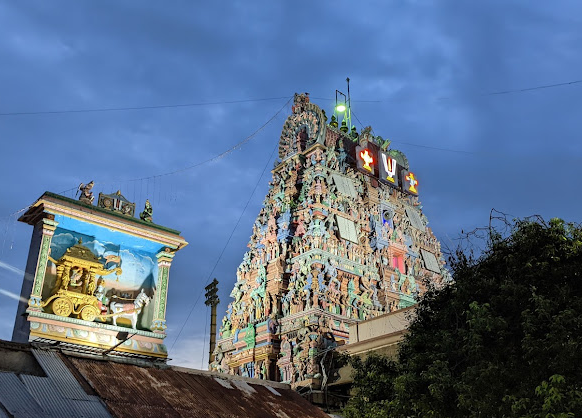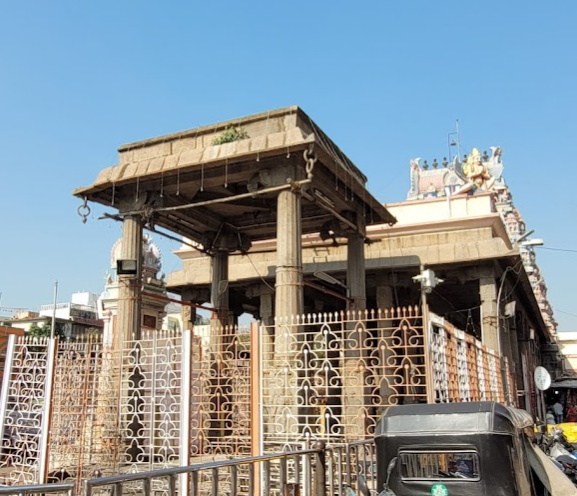The Sri Parthasarathy Perumal Temple in Thiruvallikeni, Chennai, is a revered Hindu Vaishnavite temple dedicated to Vishnu. The temple's primary deity, Sri Venkatakrishnan (Parthasarathy), is Krishna depicted as Arjuna's charioteer in the Mahabharata. The temple's origins date back to the 6th century when it was built by King Narasimhavarman I of the Pallava dynasty, and it was later renovated by the Vijayanagara Kings in the 11th century.
Legend states that Vishnu devotee King Sumathirajan desired to see Lord Krishna as Parthasarathy and was blessed with a vision of Krishna as Arjuna's charioteer. Krishna, bearing scars from the arrows shot by Bhishma, stayed in this form at the temple.
The temple features multiple shrines, including those for Ramar, Ranganatha, Varadharaja, Narasimha (Azhagiyasingar), and Andal. The temple follows the Vaikhanasa Agama and the Tenkalai tradition, and it is renowned for its elaborate carvings on the gopurams and mandapas.
Significantly, the temple is one of the 108 Divya Desams and attracts large crowds, especially during the Vaikunta Ekadashi festival, when 4,000 hymns are recited in praise of the deity. It is believed to have served as a resting place for pilgrims travelling from Tirupati for over 5,000 years. The temple is maintained by the Hindu Religious and Endowment Board of the Government of Tamil Nadu.
Who built the temple :
According to stone inscriptions, the current temple was constructed by a Pallava King between 779-830 AD. The Gopuram at the entrance was assembled by Thondaiman Chakravarthy, another Pallavan King. Later, the Vijayanagar rulers also contributed to the renovation of the temple.
Inscriptions also detail the contributions of Nandivarman, Veera Venkatapathi Raja of Vijayanagar, Rangaraya Deva, Mahamaravarman, Tribhuvana Veera Veera Deva Kulottungan, and Rajaraja Devan.
The temple of Vedavalli Thayar was constructed during the later part of the 19th century.
Speciality/ Greatness of the temple :

History and Significance: Lord Krishna, as Parthasarathy, received arrows shot by Bhishma to protect Arjuna in the battlefield. These scars are still visible on the deity. The ghee in the nivedhana (offering) is said to help heal these wounds, and no spices are used in the offerings to the Lord.
Devotees with unattractive complexions can learn that beauty is fleeting and can be affected by age, illness, or other life events by praying to Lord Parthasarathy.
Legends:
Sage Brugu performed penance here to have Lord as his son-in-law. He found a female child, Vedavalli, in the Alli flower in the Pushkarini. When she reached marriageable age, Lord Ranganatha married her. This wedding festival is celebrated on Dwadasi in the full moon fortnight of the month of Masi (February-March). Vedavalli Thayar blesses devotees from her own separate shrine and only goes around the prakara on Fridays and Uthiram star days.
Lord Krishna’s role in the Mahabharata is highlighted in his appearance as Venkatakrishna in the sanctum, with Mother Rukmini, Mother Mahalakshmi, brother Balarama, Satyaki, son Pradyumna, and grandson Aniruddha, promoting family harmony. Lord Rama has a separate shrine with Mother Sita, Lakshmana, Bharatha, Satrugna, and Sri Anjaneya.
